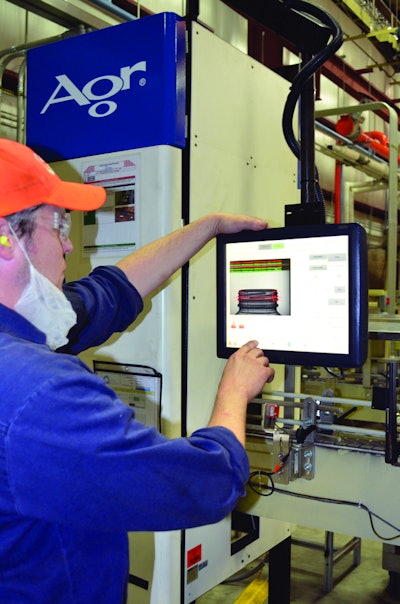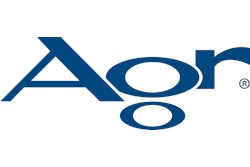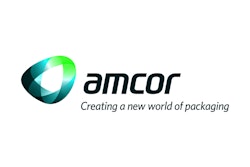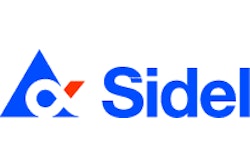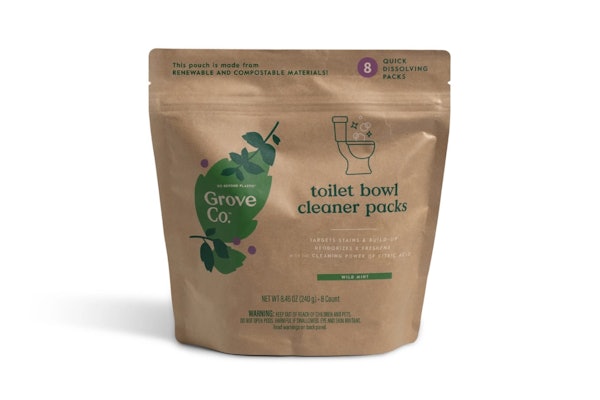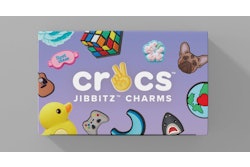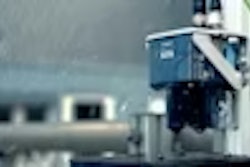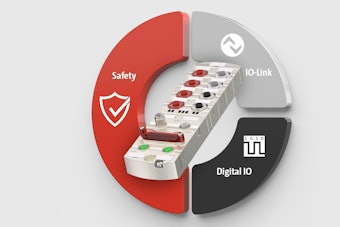True to its commitment to help customers gain competitive advantage, two years ago custom blow-molded plastic container manufacturer Graham Packaging Co. L.P. built a production facility immediately adjacent to the filling plant of an internationally known food processor (who prefers to remain unnamed). The co-location is a win-win strategy for both parties. Benefits range from saving the freight on empty bottles to the stability of a long-term supply agreement to the agility of just-in-time manufacturing.
The PET containers Graham produces for the customer are all specialty items, but one type is even more specialized than the others: 30- and 32-oz hot-fill, wide-mouth jars for peanut butter and other viscous foods. The challenge is two-fold: not only is the neck finish too large for standard preforms and blowmolders, but also its threads have to be perfectly executed or else its cap won’t screw on.
Graham’s strategy to overcome these hurdles is to use its proprietary blow-trim technology in tandem with two quality-check tools from Agr International—OptiCheck™ vision-based inspection and Process Pilot® Automated Blowmolder Control. This cost-effective approach not only makes the need for a custom blowmolder unnecessary. It also allows the plant to control the blowmolding process to a level of unmatched precision—while assuring that every container can be sealed flawlessly to protect the integrity of its contents.
Describing the through-the-wall production process, Graham Plant Manager Don Waud says, “Fifteen minutes after we blow a bottle it’s filled and going to the case packer.” The close-coupled operation promotes a steady communication flow between the container manufacturer and the customer.
The wide-mouth jars must consistently meet specifications, a responsibility with which Graham is very familiar. As a global packaging leader, it is at the forefront of the migration to plastic from glass, paper, and metal.
“We see the plastic jar in the food area as a major growth segment,” notes David Piccioli, Director, Global PET Technology Development for the York, Pa.-headquartered company.
To facilitate the shift to plastic, Graham has developed a robust technology portfolio that supports the cost-effective manufacturing of custom, value-added packaging for the branded product market. The wide-mouth jar is a classic example of the way Graham is using both in-house and Agr technology to overcome production obstacles. Let’s begin with how Graham’s blow/trim technology works. It’s been around for a while, and Graham is by no means the only PET container maker with some version of it. But it hasn’t been described very fully in the pages of Packaging World, so it’s worth a look.
The most significant difference between blow/trim and conventional blow molding used for most PET beverage bottles is that the threaded neck finish in a PET bottle undergoes no change during the blow molding process. The shape given to the threaded neck finish during injection molding is the shape it retains all the way through to when the consumer drinks the beverage.
This is not the case with blow/trim. The threaded neck finish is produced by the same blowing action as the sidewal of the jar. Then, in a secondary operation, the portion of the jar above the newly blown threads, which is referred to as the “moil,” is cut off by a trimmer and recycled.
Graham produces PET jars whose neck finish diameters are either 63 or 83 mm. Remarkably, it also uses the same Sidel blow molder to make beverage bottles whose neck finish diameter is just 43 mm. It’s a simple matter of switching out the custom molds used for the wide-mouth jars and replacing them with molds used routinely for stretch blow molding of PET bottles.
In addition to making both container formats—wide-mouth jar and conventional beverage bottle—on the same blowmolder, the blow-trim process allows the customized jar line to run at normal production speeds, in synch with the filling line. “The fact that the blow-trim process works with existing blowmolder equipment allows us to be very competitive,” says Graham Plant Manager Don Waud.
According to Piccioli, blow/trim is no walk in the park. “The process is more challenging than traditional reheat stretch blowmolding. It is much more difficult to control a blown neck finish than an injection-molded neck finish.”
Material distribution in the body and thickness in the thread region is where the challenge lies. Neck finish is especially critical. Any interference or variation in the thread dimension makes it impossible to achieve the proper torque setting when applying the injection-molded caps on the filling line. After capping and the hot-fill process, the jars are dipped in cooling water to hasten the drawing of a vacuum. A flaw in the finish—a shift in thread size or the presence of excess material, for example—can compromise the seal. The consequences—allowing cooling water into the jar, creating the potential for contamination, product spoilage, or leakage—are all unacceptable.
To ensure that each and every jar on the conveyor to the filling line is defect-free, Graham installed Agr’s OptiCheck as “the last line of defense” before the containers go through the wall to the customer facility. The compact OptiCheck is an inspection and measurement system that offers both in-line gauging of critical finish dimensions and defect detection for seal surface-related problems.
With its ability to measure finish dimensions inline to an accuracy of 0.002 inches, OptiCheck is well suited to the needs of blow/trim containers. Its finish gauging module uses a proprietary configuration of multiple cameras, LED-based backlighting, and high-speed imaging to measure the critical dimensions. Robust image analysis algorithms accurately identify flaws and blemishes, such as whiskers left from trimming, which had been a frequent but hard-to-detect defect on the Graham line.
“We are looking at the diameter of the neck, the height of neck, and multiple dimensions of the wide-mouth jars, so that after filling the cap and tamper band can be fully engaged,” Graham Process Technician Josh Chesley points out. This is where Agr’s OptiCheck comes in mighty handy. A long-standing relationship with Agr throughout Graham’s network of 72 North American plants, coupled with a rigorous qualification process, convinced Waud that the OptiCheck would function effectively.
“We produce millions of jars, and they all go through OptiCheck inspection before going to the filler,” he says. “Our customer is satisfied, and I’ve developed a very high confidence level that if a jar gets through the OptiCheck, it’s a good jar.”
Graham was so impressed with the OptiCheck’s contribution that when it sought assistance in gaining better control over the stretch blow molding process, once again the company turned to Agr. With consistency one of the chief goals in all bottle manufacturing plants, any variation in environmental conditions or inconsistency in preforms—which are always subject to batch differences and ambient temperature—can affect material distribution in the blow molder, thus affecting the final product.
Graham decided to install the Process Pilot system to automate blow molder control. Agr’s Process Pilot system incorporates a powerful interactive software component along with a series of sensors providing high-precision wall thickness measurement. These work in conjunction with the blowmolder controls to proactively manage material distribution in the bottle or jar.
“You initially set up the blow molder to make the bottle with the desired thickness properties, the baseline,” Waud explains. “The Process Pilot system manages it from there, continually adjusting the blow molder every one to two minutes to maintain the baseline thickness distribution as the process changes throughout the day or night.”
The ability to accurately monitor and manage material distribution of the container is a key benefit to Graham. The hot-fill jars have to be more rigid than traditional bottles to withstand the customer’s higher filling temperatures. The Process Pilot’s sophisticated algorithms analyze minute changes in material distribution, using the feedback to adjust critical blow molder settings so proper thickness distribution is maintained.
“The Process Pilot thickness gauge measures 16 different points on the side wall, half an inch apart, so over eight inches there are 16 measurement points,” explains Graham’s Chesley. “If there are any deviations, it automatically corrects the corresponding area of the blow molder.”
Describing the productivity benefits, Waud notes that before the blow molder control system was installed, the operator would monitor the reject rate on the OptiCheck for thread dimensions. When an issue was detected, he would make adjustments to correct the blow molder. “Now, with the Process Pilot in place, adjustments for material in the thread region are performed automatically,” says Chesley. “That control allows us to overcome issues, whether relating to operator inexperience, preform variability, or environmental influences.”
Because the system can adjust multiple blow molder parameters simultaneously—lamps, blow pressure, dwell time in the mold—the plant is able to maintain tight process control limits to produce jars that meet or exceed customer expectations with minimal operator intervention.
Waud recalls that during the Process Pilot installation, the Agr engineer took advantage of the system’s graphical data display to point out variations in blow molder performance and the impact of operator adjustments while the machine was running without the automated controls. The graphic depiction of the process on the full-color process management screen was especially useful in helping operators understand the impact of their changes to blow molder settings.
“Even our newer operators would notice the discolorations that signaled the material distribution was going out of spec,” says Waud. “We were truly learning how to reset the baseline, and our process technician has really grasped the value of the automated blow molder management.”
The results of the automated control system are quantifiable—and substantial. Process Pilot went into operation in early 2012. In the 12 months following the installation, the plant experienced a 52.7% improvement in waste reduction. Looking at all the benefits, including enhanced productivity and the savings in raw material due to consistent output, the payback period for the new system was less than one year. “We’ve also seen a big improvement in statistical process control indicators such as Cpks and PPKs since we added the Process Pilot and OptiCheck,” Waud continues. “Our productivity and customer satisfaction have increased, and we don’t run our jar line without them.”
Elsewhere in the land of PET
Crystal Geyser Water Co., Calistoga, CA, has introduced its award-winning Tejava® Premium Iced Tea in eye-catching, elegant, 18-oz PET bottles from Amcor Rigid Plastics. A cross-functional team from Crystal Geyser and Amcor, consisting of package designers, industrial designers, and engineering experts, achieved a major technical feat by applying Amcor’s vast industry experience along with advanced software programs to develop the first-of-its-kind hand-sculpted PET hot fill bottle. This innovative package design integrates into the bottle’s shape a life-sized tea leaf motif with three-dimensional qualities.
The PET container extends the Tejava® product offering beyond its 1-L and 12-oz glass packaging, allowing Crystal Geyser to penetrate the on-the-go consumer market while also expanding its national footprint. National retail distribution for the new bottles began in early June at more than 7,000 CVS Drug Stores.
Tejava® Premium Iced Tea is the world’s only 100% all natural, microbrewed ready-to-drink (RTD) iced black tea made entirely from handpicked tea leaves from the island of Java. Crystal Geyser’s vision was to create a one-of-kind PET bottle, incorporating the tea leaf motif into the design so that the final package would be distinct. “Our goal with this bottle was to provide consumers with an award-winning premium iced tea in an elegantly shaped PET bottle that distinguishes Tejava from the competition,” says Shawn Fitzpatrick, Director of Marketing for Crystal Geyser. “The bottle stands out on the shelf and its upscale image makes consumers want to stop and pick it up.”
Crystal Geyser believes the new proprietary PET bottle will set a new packaging standard in the RTD tea category. Its unique design delivers a container with strong shelf appeal, according to Mike Enayah, Amcor’s director of industrial design. “Ultimately, the bottle’s highly attractive and eye-catching shelf appeal motivates consumers to want to hold the container,” said Enayah. “This ‘organic element’ design had never been done before, but Amcor was able to deploy the right tools, great talent, and the entire team to make it happen.”
Crystal Geyser’s initial design idea was so unique that it required Amcor to go beyond its traditional CAD capabilities. Indeed, Amcor utilized seven software systems that were adapted from the gaming, animation, movie, and automotive industries to accomplish the project in an unconventional manner. Different elements of each software program were combined and then put in the hands of Amcor industrial designer Greg Hurley, who developed an “artistic” rendition of the tea leaf sculpture.
Amcor’s industrial design and engineering team worked together to refine the design and the key structural elements of the bottle. Through the collaboration between Amcor’s design, CAD, and Finite Element Analysis (FEA) team, a set of geometry was developed, providing more than an engraving but a highly refined structural element inspired by nature, explains Ricardo Sandoval, Amcor senior industrial designer. Extensive detail went into the tea leaf design, which provides an organic flow and a unique textural experience for the consumer. The concept of the bottle was to give the illusion of “holding a bundle of tea leaves.”
“The scope of the project was to develop a unique innovative design that would capture the soul of the brand,” says Christopher Howe, Amcor’s Project Engineer. “This container development required an exclusive set of skills and select talent to take the design from concept to store shelf, and at every stage of the project there were new challenges that required a unique solution.”
While the focus was on maximizing the design, Amcor also ensured that the bottle met its performance requirements to create a highly functional as well as eye-catching bottle. Amcor’s Advanced Engineering team performed FEA modelling to predict the container’s performance behavior and thus create a bottle that would be functional in the real world. Amcor employed its PowerFlex technology, which features a patented panel-less design that takes hot-fill (185 deg F) bottle options to a new level. Amcor’s structural design eliminates the panels, and unlike competitive containers, provides the freedom to create various designs along the walls.
Amcor uses design and manufacturing techniques to create a patented bottle that absorbs vacuum via a specially designed base. A unique diaphragm within the base draws upward as the liquid cools. It has the geometric characteristics to enable the inverted cone-shaped diaphragm to deflect upward as the vacuum is created.
Amcor used three software systems to adjust the design geometry, resulting in a highly functional structure that maintains its aesthetic qualities. In addition, to meet Crystal Geyser’s compressed time-to-market needs, Amcor made innovative use of rapid prototyping tooling to provide timely samples to the customer for test marketing, according to Terry Patcheak, Amcor’s senior technical manager.
